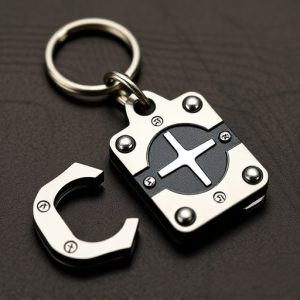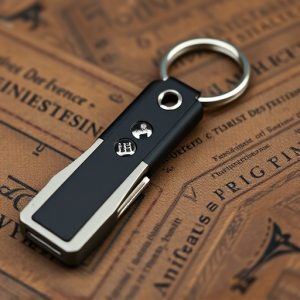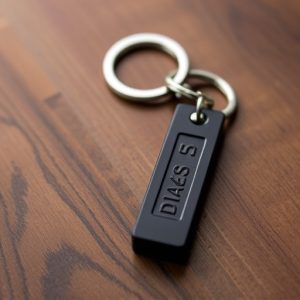Portable Keychain Weapons: Safety Features & Tactical Techniques for Responsible Ownership
Mastering tactical keychain weapon techniques requires understanding their fundamentals, prioritizin…….
Mastering tactical keychain weapon techniques requires understanding their fundamentals, prioritizing safety with advanced locking mechanisms and easy-to-use switches, and practicing proficient grip positions and cutting motions. These compact tools are effective for personal safety and tactical situations, such as disarming opponents in tight spaces. Responsible ownership includes educating oneself on local laws, practicing various techniques in safe environments, and regularly practicing to enhance defensive moves' swiftness and effectiveness.
In today’s world, portable keychain weapons are gaining popularity for their compact size and ease of carry. This article delves into the essential safety features and tactical applications of these versatile tools. We’ll explore key safety aspects to consider, such as lock mechanisms and material quality, while also discussing effective techniques for self-defense and outdoor survival. Additionally, we provide responsible ownership guidance and training recommendations for those interested in mastering tactical keychain weapon techniques.
- Understanding Portable Keychain Weapon Basics
- Key Safety Features to Consider
- Tactical Applications and Techniques
- Responsible Ownership & Training Recommendations
Understanding Portable Keychain Weapon Basics
Portable keychain weapons, often referred to as tactical keychain tools, are compact and versatile self-defense devices designed for easy carriage. These keychains typically incorporate a sharp edge, such as a knife or a saw, along with other functional features like screwdrivers, bottle openers, and even pepper spray. Understanding the basics of these tactical keychain weapon techniques is essential for users to maximize their safety and effectiveness in various situations.
The primary focus when carrying a portable keychain weapon should be on its safe handling and deployment. Users must familiarize themselves with the tool’s locking mechanisms and secure it properly after use. Proper training in self-defense tactics, including how to utilize these compact weapons as last resort options, is crucial. By learning various techniques, individuals can gain confidence and ensure they employ these tactical tools responsibly, only when necessary for personal safety or to assist others in emergency situations.
Key Safety Features to Consider
When considering a tactical keychain weapon, safety should be your top priority. Look for models equipped with advanced locking mechanisms that ensure the blade remains securely in place until intentionally deployed. A reliable and easy-to-use safety switch or lock is essential, allowing you to control when the blade is accessible. Additionally, consider keychains with features like a sheath for added protection and convenience.
The tactical use of a keychain weapon demands proficiency in handling techniques. Familiarize yourself with proper grip positions and cutting motions to ensure accuracy and minimize accidental injuries. Regular practice with your chosen device will enhance your comfort level and reaction time, making it an effective self-defense tool. Remember, safety features are only as good as the user’s knowledge and skill in employing them effectively.
Tactical Applications and Techniques
Portable keychain weapons, while compact and convenient, offer more than just personal safety; they can be powerful tools in tactical situations when combined with effective techniques. For outdoor enthusiasts and those who prioritize self-defense, learning various tactical applications is essential. Skilled users can employ these tiny devices as a last resort or to gain crucial time during an encounter.
One popular tactic involves using the keychain weapon’s sharp edge for disarming opponents by quickly targeting vulnerable areas like wrists or fingers. Additionally, the portability allows individuals to be prepared and responsive in tight spaces, enabling them to defend themselves effectively when caught off guard.
Responsible Ownership & Training Recommendations
Responsible ownership and proper training are paramount when considering a tactical keychain weapon. Before carrying any self-defense tool, individuals should educate themselves on local laws and regulations regarding concealed weapons. Understanding the legal implications ensures compliance and promotes responsible usage.
Training recommendations include practicing various tactical keychain weapon techniques in safe environments. Users should learn basic handling skills, such as proper grip and aim, to ensure accurate and controlled deployment. Additionally, training should cover different scenarios, enabling individuals to react appropriately in real-life situations. Regular practice sessions enhance muscle memory, making it easier to execute defensive moves swiftly and effectively.
When considering a tactical keychain weapon, understanding its safety features is paramount. These compact tools offer a sense of security, but responsible ownership and proper training are essential. By familiarizing yourself with key safety aspects, such as lock mechanisms and impact zone control, you can ensure these devices serve their purpose effectively without compromising your well-being or legal obligations. Incorporating tactical keychain weapon techniques into your personal safety strategy can be a game-changer in unexpected situations, empowering you to defend yourself confidently and competently.


